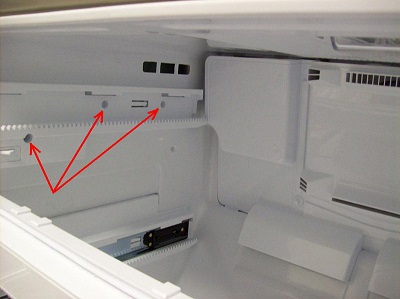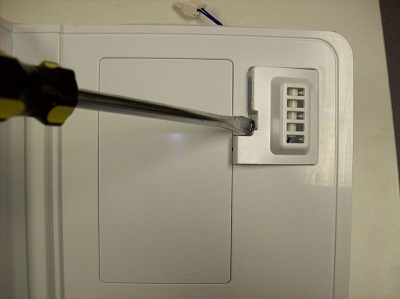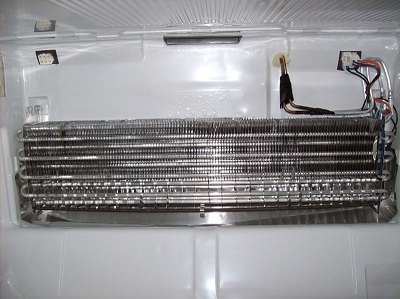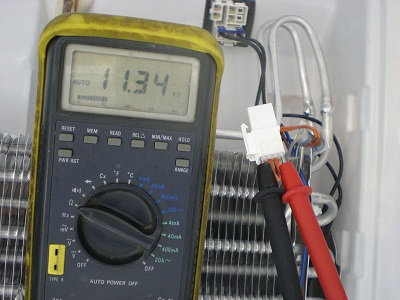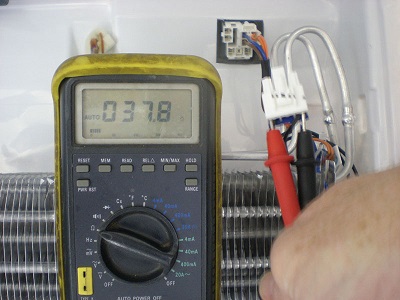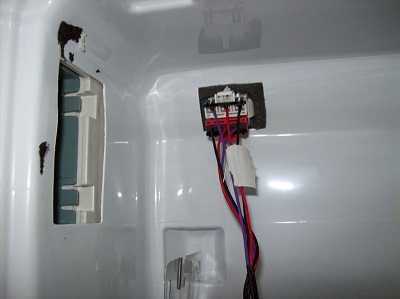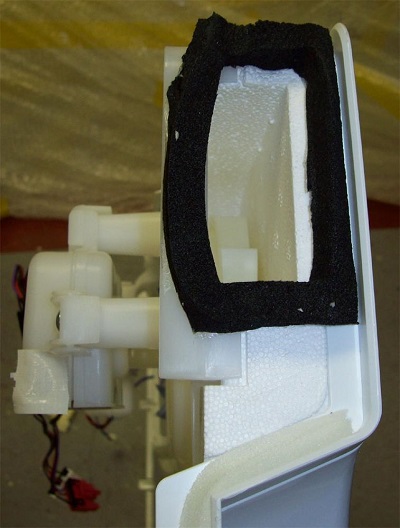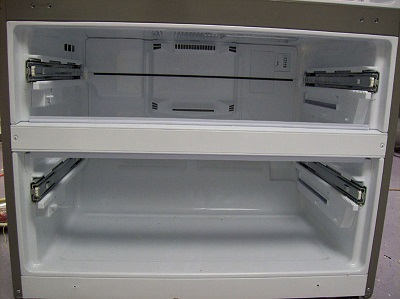
Remove the freezer drawers.
Do NOT remove the center support bar. It contains refrigerant lines and should not be removed. The lines are easily damaged and removal of the bar serves no purpose. All service operations can be completed with the bar in place.
